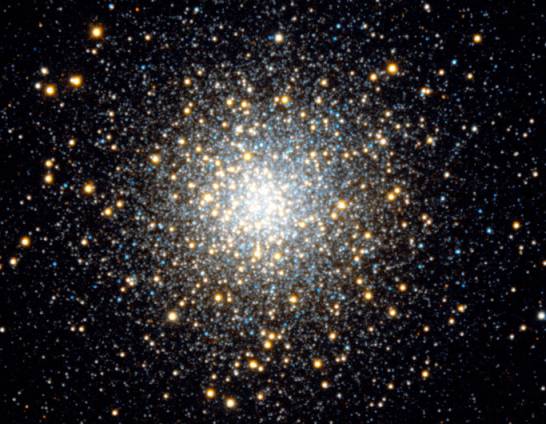
|
Explanation: Stars like the Sun use hydrogen for fuel, "burning" hydrogen into helium at their cores through nuclear fusion. But what happens when that hydrogen runs out? For a while, hydrogen burns in a shell surrounding the stellar core and the star expands to become a red giant. The bright reddish-orange stars in this beautiful two-color composite picture of the old globular star cluster M10 are examples of this phase of stellar evolution. Yet the bright blue stars apparent in M10 have evolved beyond the simple, hydrogen shell burning stage. These stars have become "horizontal branch" giants with core temperatures hot enough to burn helium into carbon. In this image, only the barely visible, faint, gray-looking stars are likely to still be burning hydrogen at their cores.
|
January February March April May June July August September October November December |
| ||||||||||||||||||||||||||||||||||||||||||||||||
NASA Web Site Statements, Warnings, and Disclaimers
NASA Official: Jay Norris. Specific rights apply.
A service of: LHEA at NASA / GSFC
& Michigan Tech. U.
Based on Astronomy Picture
Of the Day
Publications with keywords: hydrogen - helium - M 10 - M 1 - stellar evolution - star - giant star
Publications with words: hydrogen - helium - M 10 - M 1 - stellar evolution - star - giant star
See also:
- APOD: 2025 June 11 Á 25 Brightest Stars in the Night Sky
- M1: The Incredible Expanding Crab
- APOD: 2024 June 16 Á Animation: Black Hole Destroys Star
- M1: The Crab Nebula
- APOD: 2023 March 20 Á M1: The Expanding Crab Nebula
- APOD: 2023 January 15 Á M1: The Crab Nebula from Hubble
- The 25 Brightest Stars in the Night Sky
